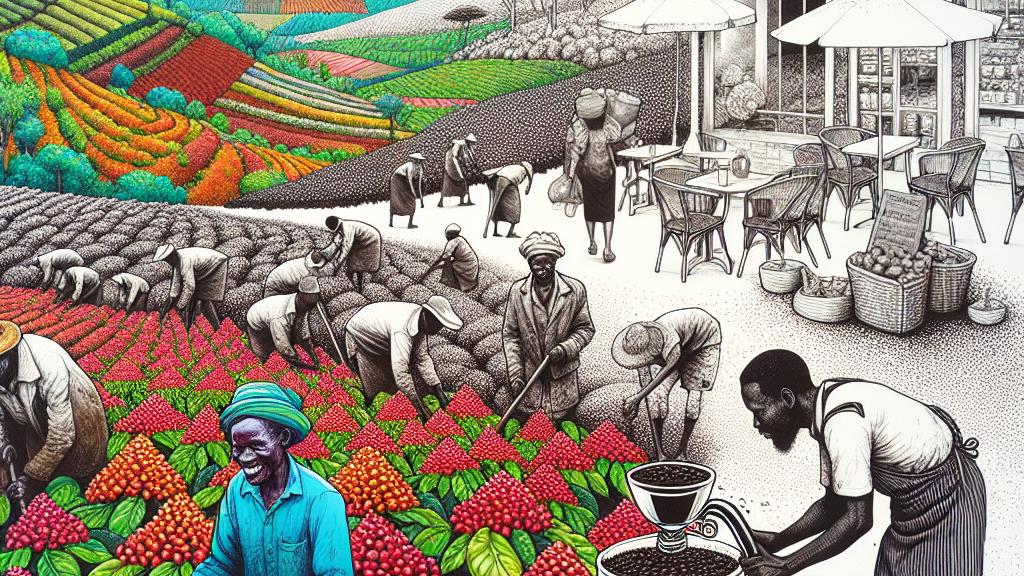Challenges Facing Coffee Farmers in Kenya
Overview
- Kenya's renowned coffee industry is under siege by climate change and economic inequalities.
- Farmers are trapped in a cycle of low wages despite high international coffee prices.
- Rising pests, diseases, and dwindling water supplies compound the challenges faced by these farmers.

The Heart of Kenya's Coffee
In the stunning highlands of Komothai, Kenya, coffee farmers like Simon Macharia cultivate a crop that locals affectionately refer to as ‘black gold.’ This isn’t just a catchy name; it reflects the rich value attributed to Kenya AA coffee beans, revered for their bold flavors, rich aromas, and delightful fruity notes. Yet, amid all this prestige, the reality is stark. Many farmers struggle to earn as little as $1.40 a day, a shocking contrast to a $4 cup of coffee sold in chic European cafes. This glaring disparity highlights a troubling truth about the agricultural economy—while farmers pour their hearts and souls into their work, they find themselves fighting against a system that often fails to reward their tireless efforts.
The Impact of Climate Change
And as if financial struggles weren't enough, climate change now casts an even darker cloud over the future of coffee farming in Kenya. Coffee trees require very specific environmental conditions to thrive, making them particularly vulnerable to shifting weather patterns. John Murigi, chairman of the Komothai Coffee Society, pointed out that erratic weather not only diminishes crop yields but also intensifies pest problems. For instance, coffee leaf miners have become more prevalent, wreaking havoc on already fragile plants. To combat these pests, farmers are often compelled to use dangerous chemicals, which can jeopardize their health and the health of the land for generations to come.
The Growing Water Crisis
Water is crucial for coffee cultivation, and astonishingly, producing just one cup requires a staggering 140 liters. However, farmers are increasingly alarmed as river levels plummet. This decline is largely driven by erratic weather patterns, such as prolonged droughts and unpredictable rainfall, which complicate irrigation efforts. Farmer Joseph Kimani illustrated this urgent crisis by stating that river flow has diminished substantially, making it even more challenging for them to care for their crops. Unfortunately, relying heavily on these limited water sources not only threatens their coffee production but also raises the specter of a long-term environmental disaster. It’s clear that sustainable agricultural practices must be embraced urgently to safeguard precious resources and to ensure that farmers can continue to thrive in an increasingly hostile climate.

Loading...